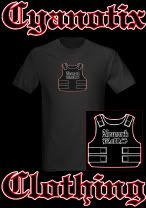Nearly 40 million U.S. adults are classified as obese.

A number of medical conditions have been associated with obesity – osteoarthritis, sleep apnea, diabetes, cancer, cardiovascular disease – to name a few. The annual health care costs for obesity-related diseases now represent some 5.5% of total healthcare expenditures in the U.S.
Because of their tremendous size, transporting such patients has become problematic. 1 in 80 men and 1 in 200 women weigh more than 300 pounds.
Many facilities find standard equipment ill-suited to address the transportation requirements of these patients. Prior to the advent of more accommodating equipment, moving a morbidly obese patient might require upwards of six men. On occasion EMTs would get hurt. Given such a need, it’s hardly surprising to see enterprising companies bringing novel solutions to market.
Stryker (SYK) has developed the MX-PRO Bariatric Transport to “move bariatric patients with dignity”. The design features a wide patient surface and wheel base to provide stability during transport. The gurney can accommodate up to 1600 pounds.
In order to get a patient of this size into the ambulance, TranSafe has developed a Ramp System that can load gurneys without lifting, pulling or pushing (using a winch that attaches to the cot).
According to the Journal of Emergency Medical Services, sales of stretchers designed for bariatric patients are expected to grow to $50 million by 2012, nearly double sales in 2004. Sales of specialized lift systems are projected to rise to $193 million.
Ambulances too require expensive modifications. A gurney typically connects to a wall mount, but for obese patients, this has proved impractical. New vehicles can be ordered with floor fasteners so that a cot can ride in the center of an ambulance. Modified suspension and loading systems are also growing more commonplace.
In the hospital setting, reinforced wheelchairs, larger waiting room seats and rolls of a special plastic material that can be placed under a patient to help slide him or her from one cot to a hospital bed, are increasingly being viewed as standard equipment.























No comments:
Post a Comment